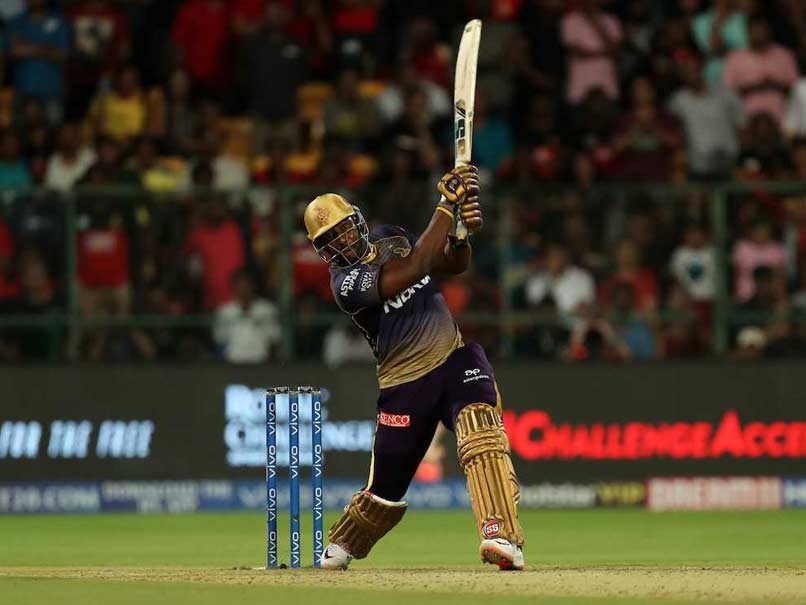In the latest episode of the 81allout podcast, we are thrilled to be joined by podcaster and blogger Subash Jayaraman, as well as Kartikeya Date, a contributor for ESPNcricinfo, The Hindu and other publications.
We talk about Andre Russell’s 13-ball 48 for Kolkata Knight Riders against Royal Challengers Bangalore, and debate whether it was an “astonishing” innings or one that should have come as no surprise. Have we even learnt how to judge a T20 innings? Do we have the grammar and metrics to judge a T20 performance without veering into hyperbole? Will the “quality” of bowling eventually cease to matter in a format so heavily skewed in favour of the bat. Questions, questions, questions….
Participants:
Subash Jayaraman (@cricketcouch),
Kartikeya Date (@cricketingview),
Siddhartha Vaidyanathan (@sidvee),
Max (@maxdavinci)
Links:
How important is bowling in T20? – Kartikeya Date
Why Gayle is the prototype of the pure T20 batsman – Kartikeya Date
Why limited-overs cricket needs to measure boundaries attempted – Kartikeya Date
A beacon of hope, a parasitic tamasha – Kartikeya Date and Freddie Wilde
(Lead image from here)

I would say that Narine is being used as that batter who bats for 10-15 balls on average and scores at 200+ SR. And it’s been incredibly effective. For instance, due to conventional “safe” batting, if one looks at the SR in a team’s first two overs, it’s usually low (90 – 110), but Narine has a markedly higher scoring rate than a genuine opener (because of the genuine opener’s conditioning).
For starters, I think all teams need to use 2 or 3 such players in the powerplay, which is being wasted by accumulators. Exactly why KD says Kohli is a bad T20 batsman.
Teams don’t go for a string of such players because, as you guys said, conventional cricketing logic still holds us hostage. A team of 8 such hitters would make 200 more often, but also get all out more often. And the latter is the number one taboo in batting.
I also don’t agree that playing out an over is a bad strategy always. All hitters do not have the same efficiency, as of now, as T20 teams are constructed now. In that case, losing a wicket exposes the other, possibly less-efficient batsmen. The strategy of going all out would be perfect if all batsmen had the same six-hitting ability, which is the template for the WI side. I agree that most teams should build that way.
I do agree that playing out 3-4 overs in a tall chase is a stupid strategy that will not come off most days.
I’ve put my thoughts in the blog post here http://view-from-the-stands.blogspot.com/2019/04/risk-in-t20-particularly-in-ipl.html
Post is a little long, so thought this was a better medium.
This was a thought-provoking podcast and a fine discussion. I agree that T20 is played sub optimally these days, with most batsmen playing a slightly riskier version of “percentage cricket” and leaving a few others to do the hitting.
However, the argument that bowlers are essentially pointless in T20 cricket and virtually interchangeable, because of the abbreviated format, seems to be overstating the case. Imagine a team of hitters against a bowling attack of Roberts, Holding, Garner and Marshall. Would they still be able to score 240 in 20 overs? Boycott said that no one hit Garner — not even Viv, not even in the nets. So it seems unbelievable to me that this attack would go for as many runs as, say, Unadkat, Vinay Kumar, Ishwar Pandey and Varun Chakravarthy. Is there data to show that a team of 7 hitters + 4 gun bowlers won’t do as well as 11 hitters whose bowling is nondescript? I would love to see a more rigorous justification of this.
I’m not convinced at all that those West Indians wouldn’t go for pretty much what bowlers go for today if they bowled today. There’s a lot of nostalgia about that side which is not borne out by their record.
The argument is not that bowlers are interchangeable. In the long run, some bowlers will produce better returns than others, just as some batsmen will succeed more frequently at hitting the long ball than others. But individual games are not decided by skill. They’re decided by luck. Its hard to explain why Jasprit Bumrah goes for 20 in one game and 40 in the next. But over a 100 games, its significant that Bumrah goes for 27 in 4 overs, while Unadkat goes for 31 (adjusting for when they bowl etc.).
Cricket is characterized by batsmen caring about being dismissed. This is due to the structure of the contest, and not due to any individual moral characteristics of players. T20 is characterized by batsmen not caring about being dismissed. That’s the point of the game – we get to watch big hitting because we’ve trivialized the cost of dismissal. That’s why it really doesn’t matter who’s bowling and who’s batting.
de Villiers facing Bumrah in a T20 game is nothing like de Villiers facing Bumrah in a Test match. de Villiers is not going to decide how he plays depending on who he’s facing. The compelling factor for the batsman is the score and the fact that there are always very few deliveries remaining.